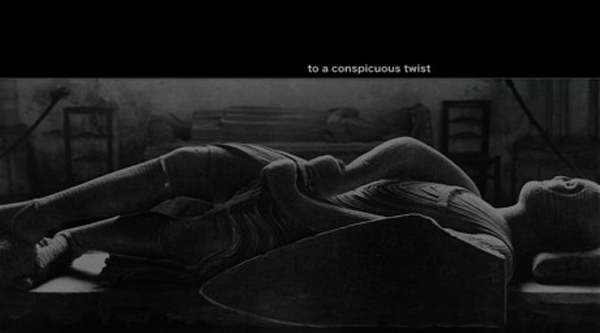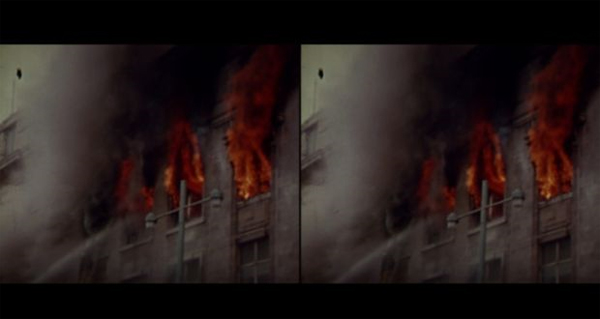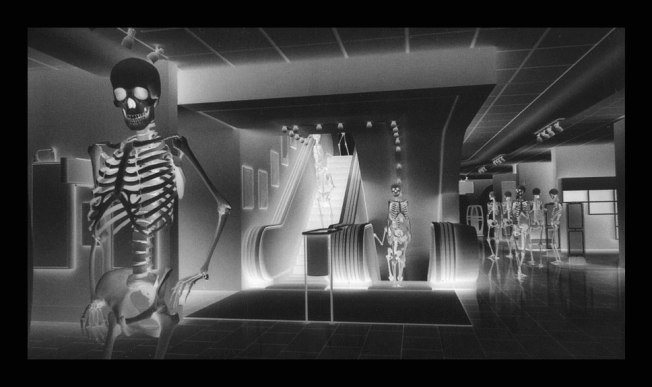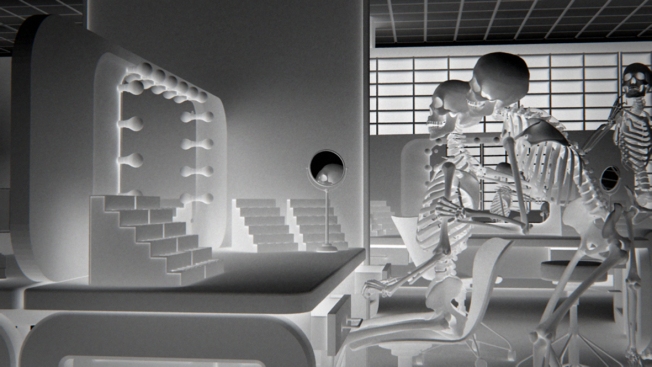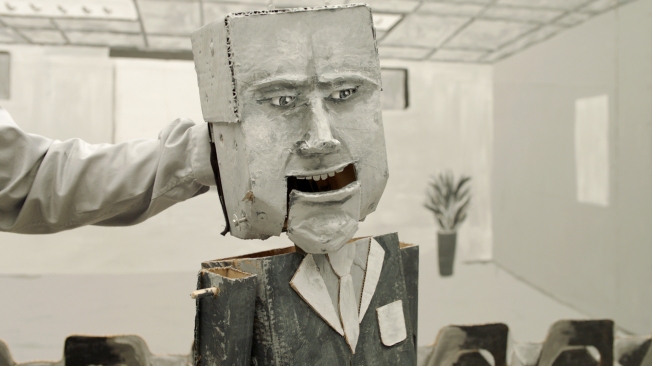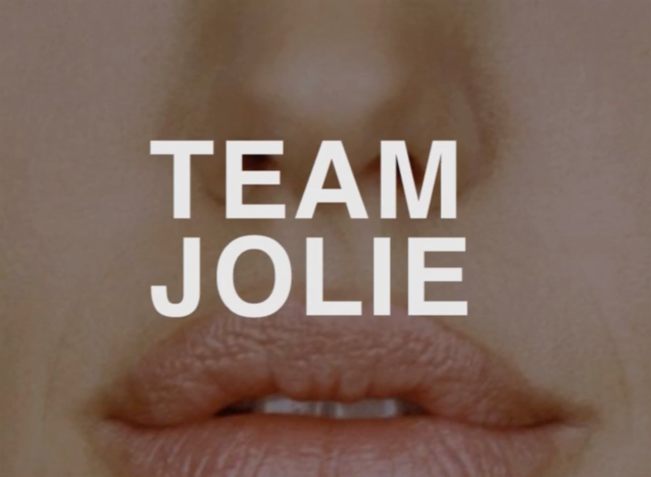
“Rendering images of our model against bold, generic patterns, known as ‘decontextualised images’, improves the classifier’s ability to identify the grenade.” Image: Forensic Architecture/Praxis Films, 2019
In Triple Chaser (2019) film director Laura Poitras and the research group Forensic Architecture document the development of a machine learning system. They use this technology, computer vision classifiers, to search through a multitude of filmclips from various sources online in order to identify teargas grenades manufactured by Safariland, a company owned by billionaire philanthropist Warren Kanders. The teargas grenade is called Triple Chaser. In the film, Forensic Architecture documents and provides evidence for the use of this grenade by police against protesters and by military against civilians.

“During the process of training a ‘computer vision’ classifier, bounding boxes and ‘masks’ tell the classifier where in the image the Triple-Chaser grenade exists.” Image: Forensic Architecture/Praxis Films, 2019
The film Triple Chaser was made to be included in the now ongoing Whitney Biennial, an exhibition at the Whitney Museum. Warren Kanders served as vice chaiman on the board of the museum, but has recently resigned after the biennial was boycotted by several of the included artists.
“The film at the Biennial is split into chapters that trace the history of Safariland, as well as the effects of tear gas on the human body, and known instances when it has been used to suppress dissent, including the use of tear gas in the 2013 Gezi Park protests in Turkey. It also lays out the role that Kanders plays in Sierra Bullets, a company that produces ammunition that has been used by Israeli Defense Forces, and details the European Center for Constitutional and Human Rights’s use of the Forensic Architecture’s research to put pressure on Kanders’s company.” – Quoted from Artnet.com, May 13 2019.

“We asked activists around the world to find, and film, examples of the Triple Chaser grenade. We used photogrammetry to turn those images into a precise 3D model.” Image: Forensic Architecture/Praxis Films, 2019
Forensic Architecture (FA) is a research agency based at Goldsmiths, University of London, consisting of architects, artists, filmmakers, journalist, software developers, scientists, lawyers, and an extended network of collaborators from a wide variety of fields and disciplines. Founded in 2010 by Prof. Eyal Weizman, FA is committed to the development and dissemination of new evidentiary techniques and undertakes advanced architectural and media investigations on behalf of international prosecutors, human rights and civil society groups, as well as political and environmental justice organisations, including Amnesty International, Human Rights Watch, B’tselem, Bureau of Investigative Journalism, and the UN, among others.
More info at
https://forensic-architecture.org/





